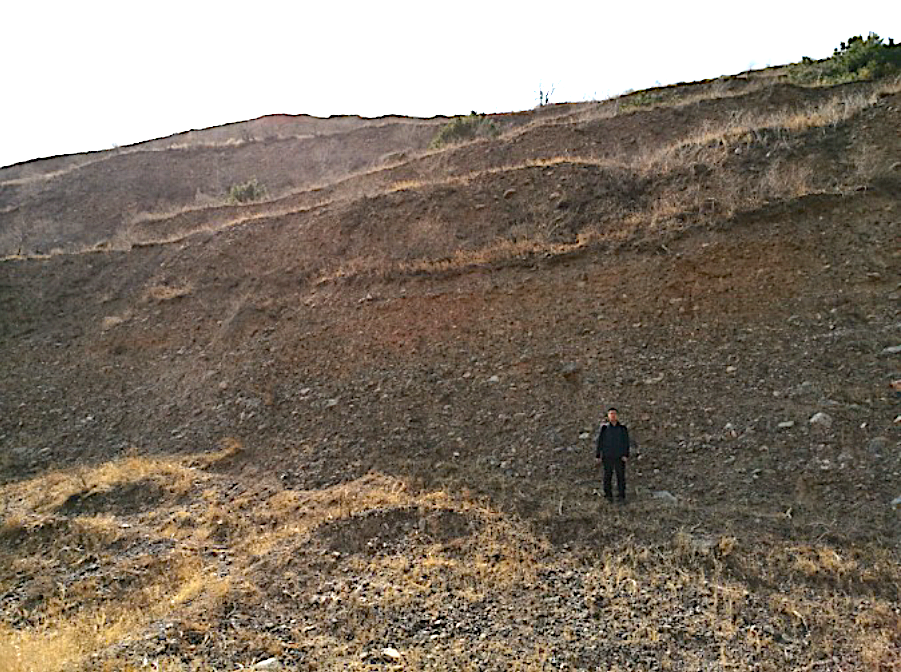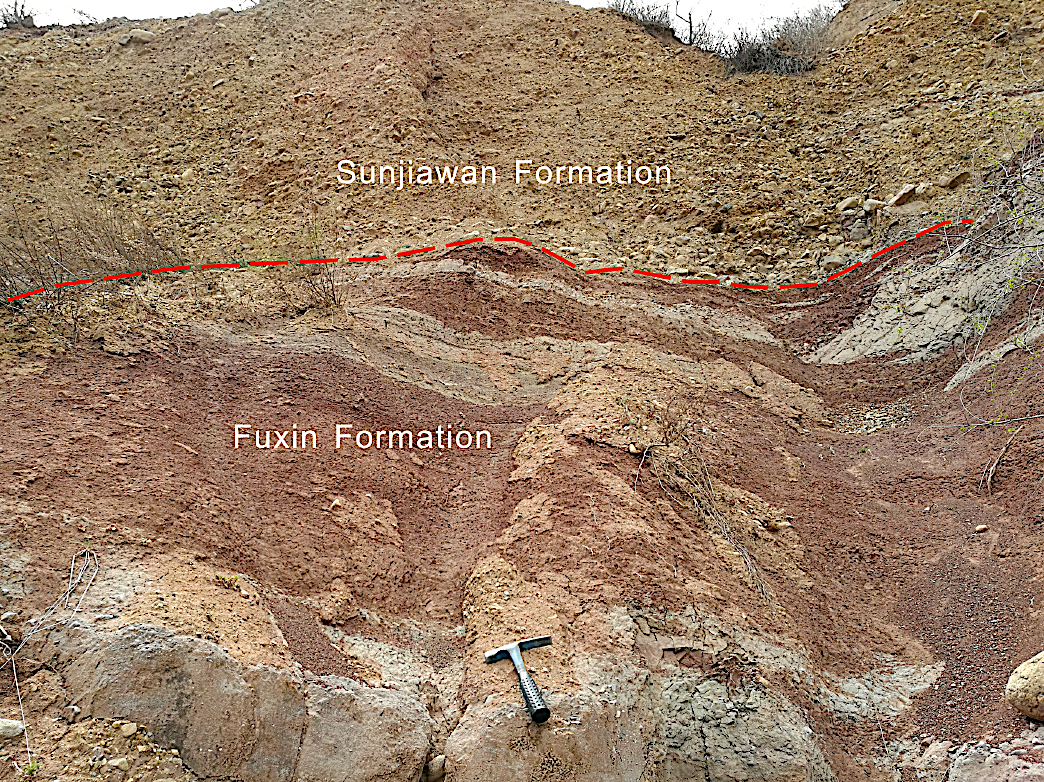Sunjiawan Fm
Type Locality and Naming
W. Liaoning. G. Morita erected the Sunjiawan series in 1939. The section for the designation is around the Sunjiawan Village of Fuxin of Liaoning. The reference section is around the Sunjiawan Village of the south suburb of the Fuxin City.
Lithology and Thickness
The Sunjiawan Formation is divided into two parts. Lower part is built up by grayish green and grayish white conglomerate intercalated with dark gray sandy mudstone and carbonaceous mudstone. Upper part is purple red sandstone interbedded with conglomerate.
[Figure: Disconformable contact between Sunjiawan and Fuxin formations in Banlashan section, Fuxin]
[Figure: Sunjiawan Formation in Gongguanyingzi section of Fuxin, Liaoning]
[Figure: Sunjiawan Formation in Chaoyanggou section of Pingzhuang, Inner Mongolia]
Relationships and Distribution
Lower contact
The base of the formation marked by the appearance of grayish green conglomerate with thin-bedded sandy mudstone is distinguished from the Fuxin Fm marked by gray yellow sandstone with thin-bedded coal beds, showing a disconformable contact with the latter.
Upper contact
Kosenko et al. (2021) indicate it is disconformably overlain by a Daxingzhuang Fm of Cenomanian-Turonian volcanic rocks (not in English Lexicon entries yet).
Regional extent
The present formation mainly occurs in the north Hebei and west Liaoning areas and is mostly developed in the Sunjiawan area of Fuxin. It varies considerably in lithology. In the Heichengzi area, it is dominated by purple conglomerate and sandy conglomerate, with a thickness of 1803 m. In the Qiantiejianggou area, it decreases in the amount of conglomerate and increases in the amount of sandy shale, with a thickness of 378.5 m. In the Zhihuan area of Fuxin, it is dominated by purple red sandstone with conglomerate, being of 450 m or more in thickness. It is 662.3-956 m in west Liaoning, 30-1000 m in the Tieling-Faku area, 216-886 m in the Xifeng area, 653-1552 m in east Liaoning, 15-1618 m in north Hebei.
The Sunjiawan Formation occurs in the Liaoning Province with different names. In the Tieling-Faku and Xifeng areas, it is called the Yuxin Fm and the Quantou Fm; and called the Dayu Fm in east Liaoning; and called the Ximalin Fm and Tujingzi Fm in north Hebei.
GeoJSON
Fossils
The Sunjiawan Formation yields floras Acanthopteris onyuchioides, Ginkgoites sp., Elatocladus cf. manchuriaca; in the Dongliang area, ostracods such as Cyprideas (Bisulcocypridea) spinellosa, Triangulicypris longissima, Cylocypris invada and sporopollen grains such as the Deltoidospora-Classopollis-Tricolpites assemblage.
Age
Depositional setting
Additional Information
Enhanced with Igor N. Kosenko, Jingeng Sha and Boris N. Shurygin (2021). Upper Mesozoic stratigraphy of Sikhote-Alin (Russian Far East) and northeastern China: Non-marine and marine correlations. Part 1: Upper Jurassic-Hauterivian AND 2. Barremian-Aptian. Cretaceous Research, 124: articles 104811 (https://doi.org/10.1016/j.cretres.2021.104811) AND 104812 (https://doi.org/10.1016/j.cretres.2021.104812)


